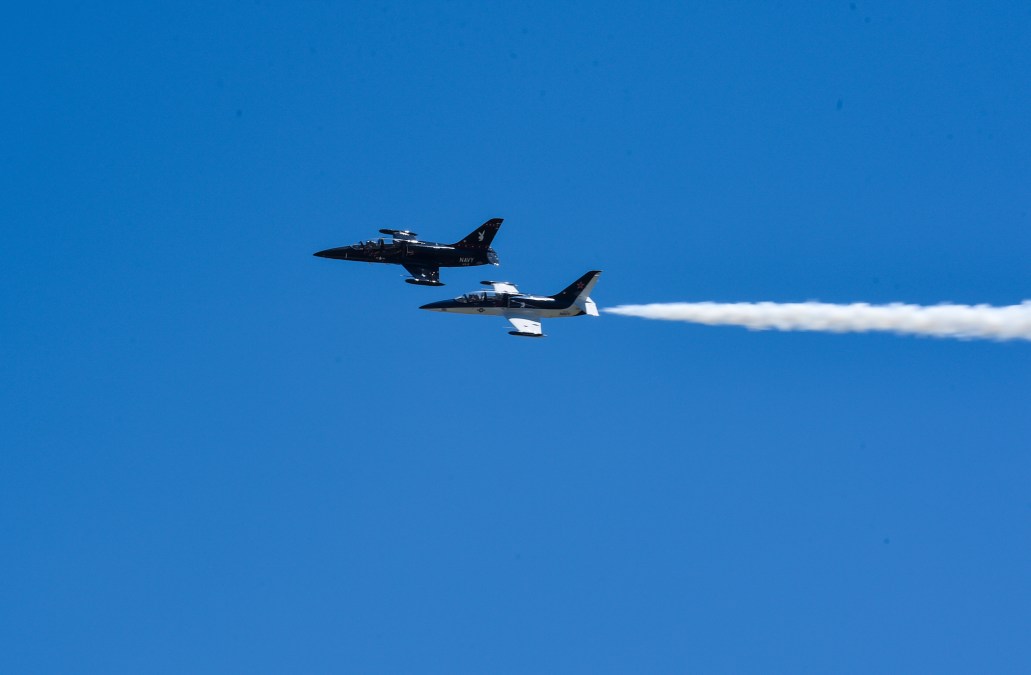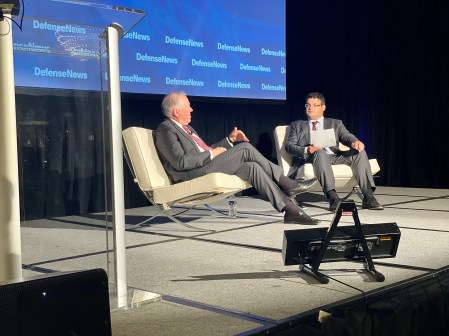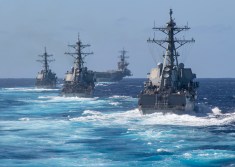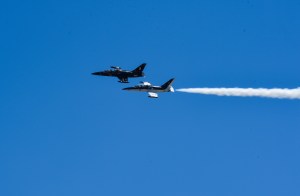2021 in review: JADC2 has ‘irreversible momentum,’ but what does that mean?

The word of the year for the Department of Defense’s sprawling tech modernization initiative to connect everything in a battlefield? Momentum. It was the year that momentum became “irreversible,” senior leaders repeated.
The goal for Joint All Domain Command and Control (JADC2) is to have a fully connected battlefield that links weapon systems, command centers and sensor data into an integrated force design. It’s a complicated system-of-systems, and it represents a stark contrast from the current disparate set of C2 networks that lack interoperability.
Much of the foundation for implementing the strategy has been laid this year. Senior leaders say that’s where the momentum comes from. But tangible tech outcomes have been so far small.
“I think the Joint Warfighting Concept and JADC2 have enough momentum now that they are going to go forward,” former Vice Chairman of the Joint Chiefs of Staff Gen. John Hyten said in his final media appearance before retiring this November.
This year the DOD got a JADC2 strategy, as well as a cross-functional team and working groups for its implementation. Critically, the project also received endorsements as a top priority from the department’s senior most leaders. Related programs to boost data and AI use also went from ideas to reality, like the Artificial Intelligence and Data Accelerator (ADA) and the Rapid Defense Experimentation Reserve (RDER).
Lt. Gen. Denis Crall, the Joint Staff’s CIO and J-6, previously told FedScoop the cross-functional team (CFT) is working on the “basic building blocks.”
“Doing the simple things first is really most critical,” he said.
The CFT is composed of more than 100 people from across the department organized into working groups, which also have seen steady expansion. Just last week, another working groupn was added to the roster that focuses on AI.
This phase of JADC2 will last 3-5 years, Crall said. The idea is that the military is laying down its foundation of technical guidance, strategy and conceptual frameworks while the services lead in experimenting on actual tech.
The goal for the CFT is to “work our way out of the job in three-to-five years,” Crall said.
Below the CFT’s high-level work are experimentations being carried out by the services. Each military department has their own program that is testing out how to realize JADC2, a trend that also built toward the momentum leaders described.
A year of more experiments
Each service continued to build program offices and experiment on what they call their JADC2 “mission threads.”
The Army’s Project Convergence saw its second major experiment — and added several virtual tests to prepare for the second gathering in the desert. Project Convergence 21 followed an initial test event in 2020, but this year’s experiment included participation from every service and took place over multiple weeks rather than a few days in 2020 in Yuma Proving Ground in Arizona.
The Navy’s Project Overmatch team says it has created meaningful new capabilities, but officials said that they can’t release information on them yet. There is grumbling among civilians in the Department of the Navy that the program lacks direction and has not produced the kind of tech leaders are touting.
The Air Force’s Advanced Battle Management System continued to grow, but faced a critical review from the new secretary. Frank Kendal adjusted the scope and goal of the program to focus on what he called real, meaningful capabilities that could advance the Air Force and Space Force today — and not chasing possible tech that is still years away.
“I don’t think we’ve thought thoroughly enough about where that type of technology can have the most impact and how to get there as quickly as we can,” he said in August. “I want to emphasize fielded, meaningful military capability, not just a demonstration that you show what cool thing you could do, but real capability in the hands of operators.”
To date, the Air Force has managed to create new data links between aircraft, an improvement over current capabilities but far short of the measurement of having an all-connected force.
Air Force officers have hinted there are more exciting new capabilities that can’t be released publicly.
“Thanks … for your realization of the level at which would be appropriate for us to talk about,” The vice commander of the 16th Air Force, the Air Force’s cyber component, Maj. Gen. David Gaedecke said in November in response to a question about the limited nature of the initial capabilities of ABMS.






